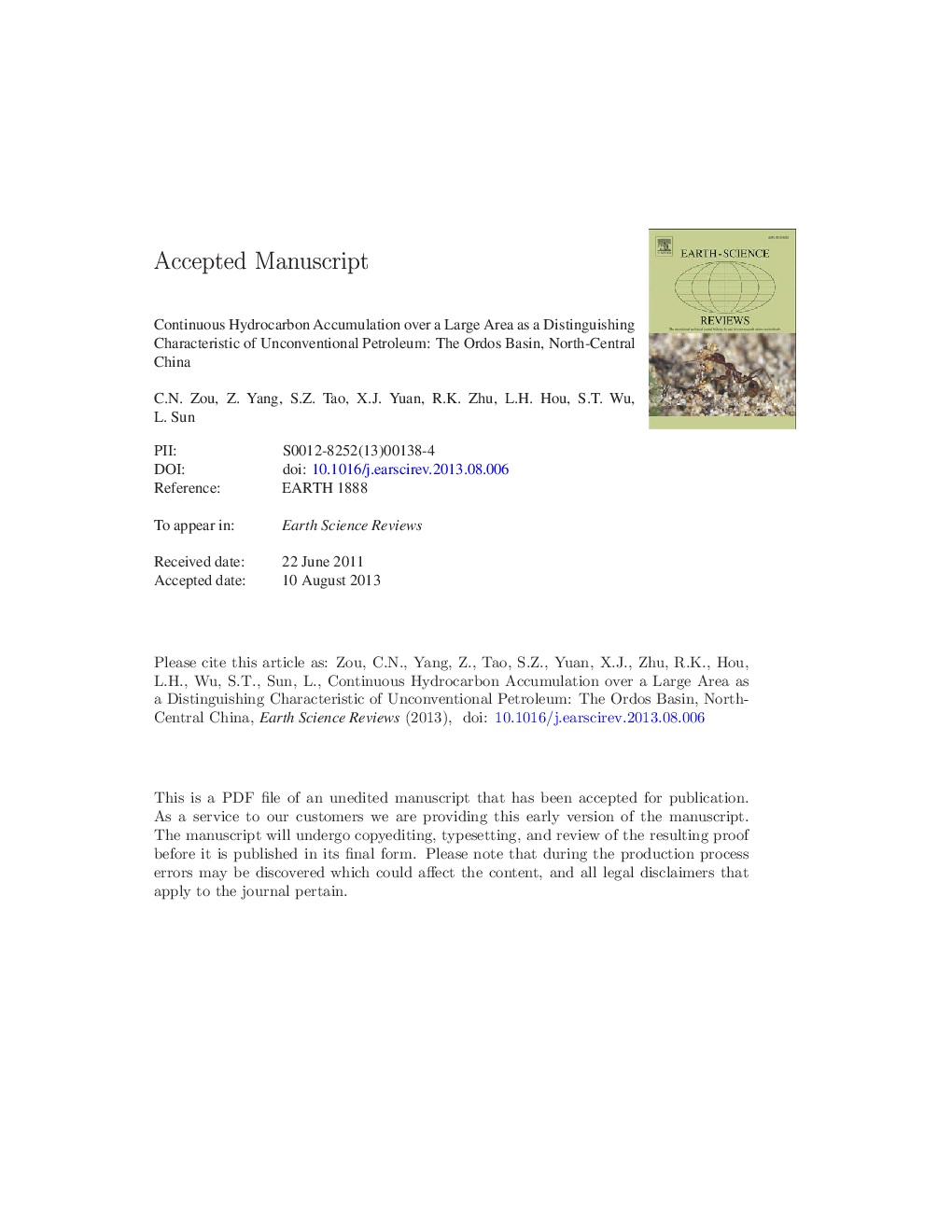| Article ID | Journal | Published Year | Pages | File Type |
|---|---|---|---|---|
| 6443104 | Earth-Science Reviews | 2013 | 41 Pages |
Abstract
Global petroleum exploration is currently undergoing a strategic shift from conventional to unconventional hydrocarbon resources. Unconventional hydrocarbons in tight reservoirs show characteristics distinct from those of conventional hydrocarbon sources hosted in structural and stratigraphic traps. The characteristic features include the following: a hydrocarbon source and reservoir coexist; porosity and permeability are ultra-low; nano-pore throats are widely distributed; hydrocarbon-bearing reservoir bodies are continuously distributed; there is no obvious trap boundary; buoyancy and hydrodynamics have only a minor effect, and Darcy's law does not apply; phase separation is poor; there is no uniform oil-gas-water interface or pressure system; and oil or gas saturation varies. Examples of unconventional hydrocarbon accumulations are the Mesozoic tight sandstone oil province and the Upper Paleozoic tight sandstone gas province in the Ordos Basin, north-central China. Generally, continuous hydrocarbon accumulation over a large area is a distinguishing characteristic of unconventional hydrocarbon sources. Because of the great potential of unconventional petroleum resources, it is believed that research on such resources will be at the forefront of the future development of petroleum geology.
Related Topics
Physical Sciences and Engineering
Earth and Planetary Sciences
Geology
Authors
C.N. Zou, Z. Yang, S.Z. Tao, X.J. Yuan, R.K. Zhu, L.H. Hou, S.T. Wu, L. Sun, G.S. Zhang, B. Bai, L. Wang, X.H. Gao, Z.L. Pang,
